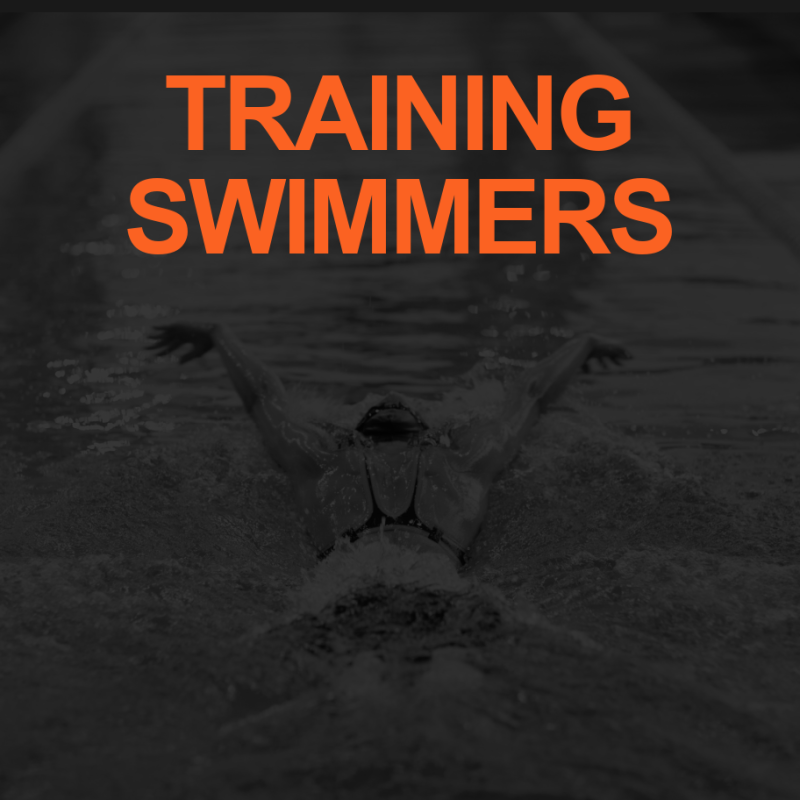
Although both swimming practices and competitions take place in aquatic environs, dryland training can provide substantial benefits for dedicated swimmers. Resistance exercises can aid in building muscle endurance, improving coordination and stability, and increasing power. While there are many similarities to developing land-based athletes, appropriately exercising swimmers has a few nuances. Let’s examine some specifics as to how personal trainers can effectively coach their clients who swim regularly.
Training Swimmers to be Injury-Free
First and foremost, training swimmers outside of the pool requires prioritizing injury prevention. Despite being referred to as a “low-impact activity”, competitive swimming generally requires thousands of movement repetitions, often in positions unusual to normal daily life, within a single workout. Combine that with a grueling practice schedule that may range anywhere from three to nine multi-hour swim workouts per week, and you can begin to understand why the swimmers you saw at school growing up always looked so tired!
In fact, most of the seasonal in-water training cycle for swimmers focuses on muscle breakdown. Therefore, the initial priority for trainers when beginning working with swimmers is to focus on keeping their bodies as injury-free as possible. This may happen through physical means like resistance band exercises.
Resistance Band Exercises
Using a handled band with low to moderate resistance anchored at chest height, some appropriate exercises include:
- Rows
- Shoulder-blade Pinches (retractions)
- Chest Presses
- Chest Flys
- Tricep Extensions
- Bent-over Lat Pulldowns
As swimming is highly taxing on the shoulder muscles, doing movements such as those above before pool workouts are a great way for the athlete to dynamically warm-up their muscles.
Other activities like myofascial release, as well as encouraging good nutrition and quality sleep will help swimmers maximize their recovery between training sessions. Keeping swimmers healthy allows them to eventually reap massive benefits (a.k.a. major speed boosts) when the in-water training scales back in preparation for major competitions.
Swimming Strength Foundations
Additional components of dryland training should emphasize three main areas:
- Building core stability
- Full-body strength exercises that, if possible, connect to in-water movements
- Developing explosive power
Core Stability
Nearly all time moving through the water is spent in a drawn-out position, either in full or partial streamline. Streamline position means that the arms are fully extended straight overhead with one hand on top of the other, while the biceps squeeze the head, the core remains tight, and the legs fully stretch through the toes. Cultivating a sturdy and stable core allows for the swimmer’s body to remain stabilized in efficient positions during the stroking portion of a length across the pool.
Highly beneficial core exercises often involve a lengthening of the bodyline while holding the core tight, such as:
- Planks with Leg Lifts
- Dead Bugs
- Bird-Dogs
- (Streamline) Leg Drops
- 6-inch Flutter Kicks
Total-Body Strength
While a strong core helps the athlete maintain an efficient body position, forward propulsion comes from propelling water backward with the arms or legs. Competitive swimming has four official strokes: backstroke, breaststroke, butterfly, and freestyle.
Recent years have seen the utilization of one “unofficial” – but extremely fast – stroke, the dolphin kick. Through resistance exercises, swimmers can build strength and endurance in their muscles, increasing their speed and reducing the likelihood of injury caused by fatigue. Along with diving off the blocks and turning at the walls, these movement types encompass the various parts of a swimming race. Exercises that closely simulate aquatics movements on dry land can be highly beneficial, as they reinforce neural patterns established in the pool.
Here are some advantageous exercises for each of the movement patterns that closely mimic in-water motions:
- Backstroke – Alternating Dumbbell Chest Presses & Alternating Side Ball Slams
- Breaststroke – Sumo Squats, Machine Rows, and Med Ball Chest Passes
- Butterfly – Pull-ups, Dumbbell Lateral Raises, and Olympic-style lifts like a sandbag clean
- Freestyle – Dumbbell Rows, Single-Arm Barbell Landmine Overhead Presses, & Single-Arm Forward Ball Slams
- Dolphin Kick – Leg Extensions & Hamstring Curls
Explosive Power
Despite making up a smaller portion of length than the strokes above, starts and turns provide excellent opportunities to gain speed by increasing power. Maximizing the dynamic leap off the block and the bounce off the walls can significantly improve a swimmer’s times.
For starts and turns, athletes can train explosiveness by doing exercises such as:
- Box Jumps
- Long Jumps
- Burpees/Squat thrusts
- Jump Switch Lunges
As you can see, there are a variety of techniques personal trainers can employ to assist swimmers in training harder and racing faster, while also working to reduce their chances for injury. With this knowledge in hand, trainers can help swimmers improve as athletes both inside and outside the pool!
 Author Bio
Author Bio
An NFPT Certified Personal Trainer, Andrew is also a lifelong swimmer, with coaching experience in the sport that spans the gambit of children learning to swim, to developing adolescents, to NCAA Division 1 collegiate athletes. He has personally achieved multiple U.S. Master’s Swimming Top-10 accolades, and he has given educational presentations at elite swim camps across the country. Andrew will be pursuing a Master of Public Health degree in Health Behavior & Health Education at the University of Michigan in the fall of 2022.







